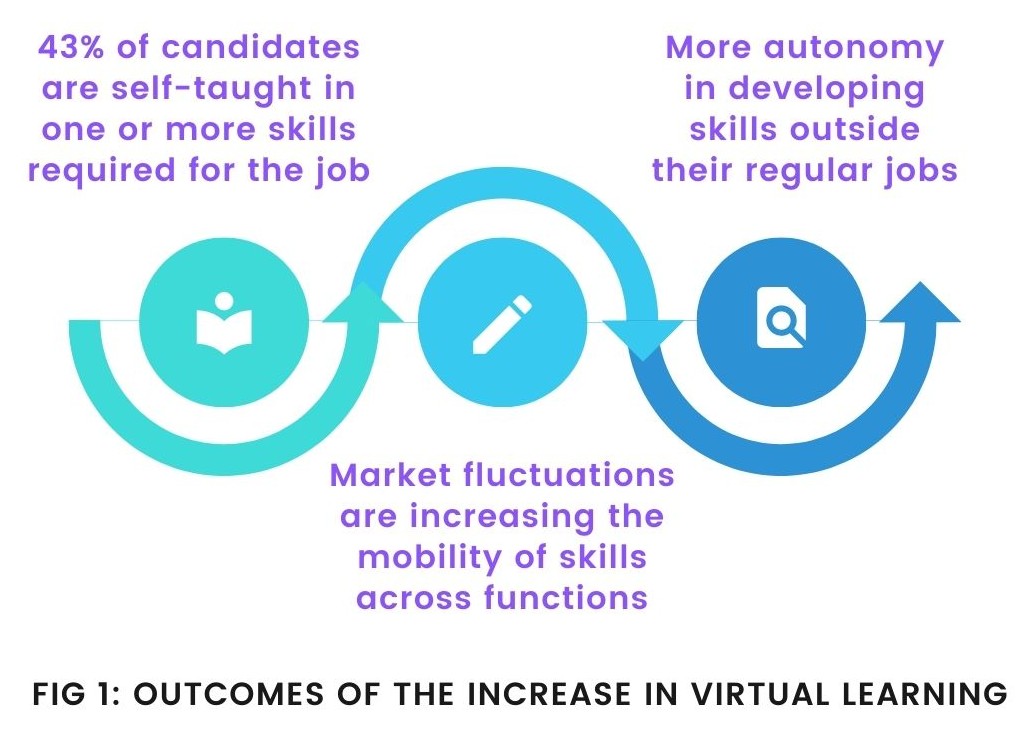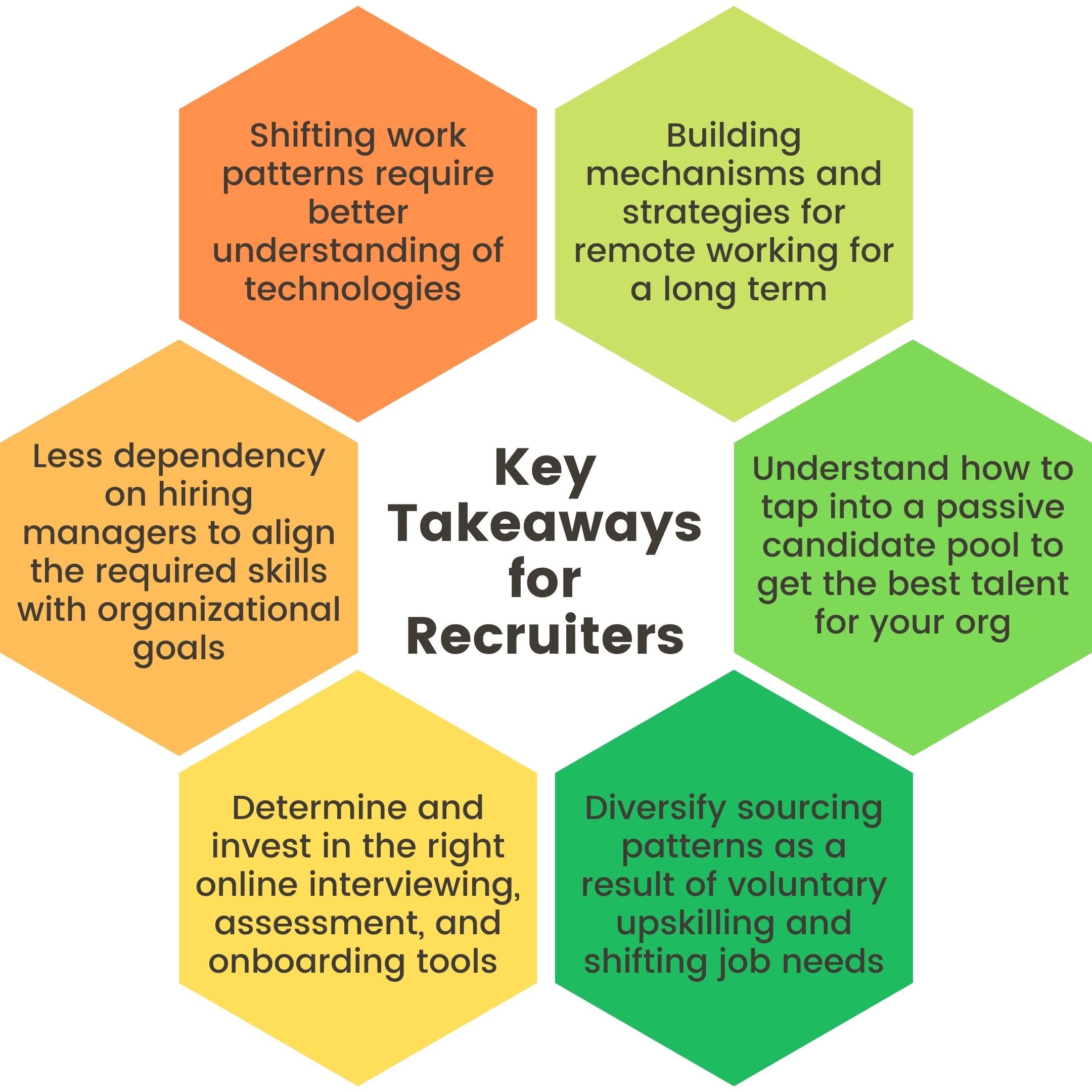Over the last decade, we’ve seen recruitment shifting in numerous ways, be it the way recruiters source their candidates or the way recruiters speak to their candidates. A lot of this, though not all, can be credited to Digital Transformation and its catapulting affects; there have been a number of macroshifts in the domain of talent acquisition, which have made the trusted and widely-followed practices obsolete.
Leaders and hiring managers across the globe were already preparing for this shift, but as soon as the pandemic hit the world, the transformation was accelerated. In the current scenario, with organizational survival taking priority, organizations need to have the right talent to regrow once the economy booms again.
People have been looking at COVID-19 pandemic as a thing from which you need shelter, a thing that needs to be weathered, and a thing they need to manoeuvre around to succeed. That thinking, we believe, is naïve.
This pandemic is a reality, an imperative that would certainly lead to a reboot – and that reboot is also required for talent strategies and figuring out a way ahead.
Here are six factors we believe will change the future of recruitment:
- Shifting work patterns: The world of skills been undergoing a revolution a long time before the pandemic happened. However, its pace has accelerated now.
With remote work being the new norm, employees are expected to understand and learn new technologies; be it something as simple as collaborative platforms we work with to our work patterns in accordance to the new social distancing rules.
Moreover, the roles that had to be done manually have now be restricted to essential only in the short term, and most certainly would require automation in the long term. These shifting work patterns and increasing demand of understanding technology is what's defining the future right now. TAs, then, have to be sure the people they hire now or in the near future align to these functionalities.
- Hiring freeze: With rapid evolution of skills, oftentimes hiring managers themselves are unsure of the roles they would require. They do not hire or get involved in the hiring process as frequently as TAs do so they often don’t understand how to translate their requirements. And now with a mass hiring freeze across industries, there would be a dip in understanding further. The less involved they are, the less likely they are to hire quality candidates.
The onus now falls on TA leaders on how to understand these requirements to hire the best candidates. They need to initiate and lead hiring needs discussions with the team, understand the requirements from them, align them with the company's future goals, and then proceed to hiring. - Increase in virtual learning: It wouldn't be unheard of hearing a literature major or entering the marketing tech field or a philosophy major in the market research field.
This has been made possible, to an extent, by virtual learning; people with varied experiences and educational profiles have now practical knowledge about all major fields at their disposal. Given how unstable the economy is, it is only natural that people would want to acquire skills that make them more employable.
TA leaders, now, have to devise ways on how to access profiles of people with the required skills but diverse backgrounds. This also means that they’d have to go beyond the widely used and trusted keyword search mechanism.
- Shift in hiring methods: With the world now working from home, it has become next to impossible to depend on the traditional ways to recruit and onboard employees. Under these circumstances, the necessary thresholds like pre-employment assessment, interviews, and employee onboarding need to reinvent themselves.
TA leaders need to invest in tools and methods that are adept in these processes. For instance, skill assessment is a major criterion for recruitment; traditional, pre-COVID practices required the candidate to go down to the office campus to take the said test, but now these tests need to be conducted online.
What these shifting habits mean for recruitment leaders is that they need to understand and invest in technology that ensures good interviewing and online skill assessment for both candidates and interviewers. - Passive candidates and market: Between 2006 to 2009, the time of the last recession, the percent of passive labour market increased by 18%.
It is natural for anyone to not switch jobs while the economy is unstable, the normal human tendency is to stick to what’s been working. This can be majorly credited to ‘last in, first out’ policy that a lot of organizations tend to follow (in case of forced layoffs).
Despite increasing unemployment, the competition is still stiff for critical roles.
This passive market and uncertainty of whether good candidates would want to switch under current circumstances will now force the recruiters to switch to a broader skills market and understand how to tap into the passive market. - Remote work acceptance: Remote work has been in practice for a long time, with different department having more (or less) autonomy on how they want to leverage this privilege. Employee experience has also been taking precedence, with employees demanding more than just simple compensation and benefits. They want more autonomy with their work, which manifests in not just where they wish to work, but also how, when, and with whom they want to work.
What this means for TA leaders and management is that they need to come up strategies to accommodate this demand.
WFH is ubiquitous now, it isn’t a privilege as it once used to be, so TAs need to figure out how to personalize this experience. Employees are now used to this autonomy, and would be reluctant to give it up even after the traditional working spaces open up.
From these factors, we can understand what would be required of the future leaders of talent acquisition.

It is time the recruiting function reinvent themselves in order to not just ensure business continuity during the ongoing pandemic, but also to ensure the organizations thrive during and after the pandemic. 

